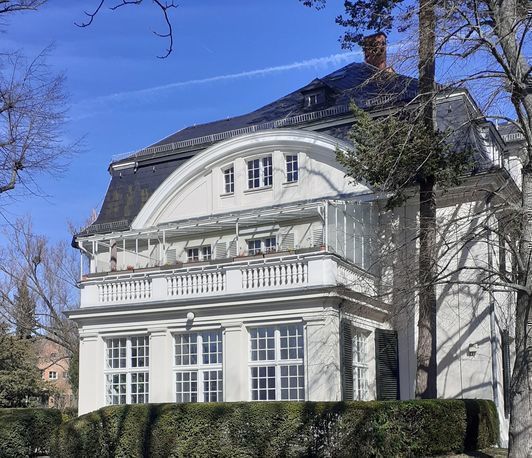The A+ Upgrade to Advanced LIGO and Applications of Hydroxide Catalysis Bonding
- MP Department Seminar
- Date: Jul 25, 2025
- Time: 09:30 AM - 10:30 AM (Local Time Germany)
- Speaker: Dr. Stephen Webster
- Institute for Gravitational Research, University of Glasgow, United Kingdom
- Location: Building K, Haber-Villa, Faradayweg 8, 14195 Berlin
- Room: Seminar Room
- Host: Department of Molecular Physics
- Contact: thomas@fhi.mpg.de

Advanced LIGO (the Laser Interferometer Gravitational-Wave Observatory) is designed to measure the quadrupolar strain of space itself arising from passing gravitational waves and in 2015 made the first observation of a binary black hole merger [Abbot et al, Phys Rev A, 116, 061102 (2016)]. With subsequent improvements to the interferometer, detections of such events now occur at a rate of 2-3 per week, with sources located at distances of up to 3 billion light years.
The A+ upgrade to aLIGO aims to reduce the noise floor of the instrument and, so, to further extend its reach into the Universe. Improvements to large-scale optics (reduced coating thermal noise, increased aperture), active optics for optimizing mode-matching, and the implementation of a balanced homodyne detection scheme, to maximise the efficacy of frequency-dependent squeezing, are the primary features of the upgrade.
The Institute for Gravitational Research has pioneered the use of hydroxide catalysis (HC) bonding in the suspension of the large-scale (40kg) mirrors used in LIGO. It was also responsible for delivering the optical bench for the LISA Pathfinder Mission, a precision-aligned network of optical components HC-bonded to a glass baseplate. The technique has potential for wider application within photonics, with a HC bonded approach having recently been shown to be effective in preventing power degradation in a uv-laser system.
The key features of the A+ upgrade will be presented together with aspects of applying the HC-bonding technique to laser and optical systems.